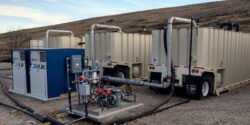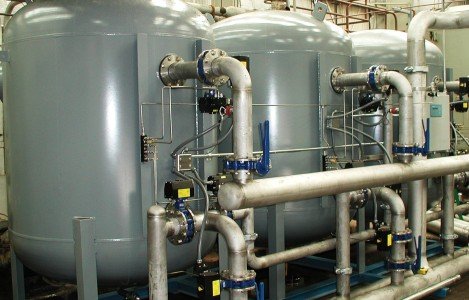Kingwood Central Wastewater Treatment Plant

The Kingwood Central Wastewater Treatment Plant: A Cornerstone of Environmental Stewardship and Community Health
Introduction
Kingwood, a picturesque suburb located in the northeastern part of Houston, Texas, has long been celebrated for its natural beauty, encompassing lush parks, serene lakes, and extensive greenbelts. However, beneath its picturesque facade lies an intricate engineering marvel that ensures the cleanliness and sustainability of this community: the Kingwood Central Wastewater Treatment Plant (KCWTP). This article delves into the history, engineering genius, and environmental importance of the Kingwood Central Wastewater Treatment Plant while discussing its role in public health, community impact, and the future of wastewater treatment technologies.
Historical Background
Established in the early 1990s to address the growing population and subsequent rise in wastewater production, the Kingwood Central Wastewater Treatment Plant marks over three decades of service. Initially, wastewater management in Kingwood was a scattered endeavor relying on smaller, decentralized facilities that struggled to keep pace with the rapidly expanding community. The rise in demand for a more robust wastewater treatment infrastructure led to the construction of KCWTP.
Evolution Over the Years
Since its inception, the plant has undergone numerous upgrades and expansions to keep up with regulatory changes and the community’s increasing needs. Significant technological advancements in wastewater treatment, alongside a strong push for environmental stewardship, have been integral to its evolution. Investments in newer, more efficient equipment, integration of real-time monitoring systems, and stringent adherence to environmental regulations have ensured that the plant continually meets and exceeds performance expectations.
Engineering and Operations
The Kingwood Central Wastewater Treatment Plant utilizes a multi-stage treatment process designed to remove organic matter, solids, and harmful pollutants from the wastewater. These processes make the effluent water safe enough to be discharged back into the environment, contributing to ecosystem health and pollution control.
Preliminary Treatment
The first stage in the plant’s treatment process is preliminary treatment, which entails screening and grit removal. Large debris, such as rags, sticks, and plastics, are filtered out using mechanical bar screens. Following this, particulate matter like sand and gravel is removed in grit chambers. These early steps are crucial in preventing damage to the more delicate equipment used in later stages.
Primary Treatment
In the primary treatment phase, wastewater is directed into sedimentation tanks, allowing smaller, suspended solids to settle at the bottom through gravitational forces. The settled solids, known as primary sludge, are collected and directed to sludge treatment facilities, whereas the clarified water moves to the secondary treatment stage.
Secondary Treatment
Secondary treatment is where the bulk of biological decomposition occurs. Utilizing activated sludge processes, this stage introduces microorganisms to the wastewater to further degrade organic pollutants. The inclusion of oxygen, facilitated through aeration tanks, accelerates microbial activity. Following aeration, the mixture flows into secondary clarifiers, enabling biological flocs to settle out, forming secondary sludge. This phase is critical for significantly reducing biochemical oxygen demand (BOD) and suspended solids.
Tertiary Treatment
To achieve higher levels of refinement, the plant employs tertiary treatment, which could include filtration, nutrient removal, and disinfection. Filtration is achieved through sand filters, while chemical methods such as chlorination or ultra-violet (UV) light disinfection are deployed to eliminate pathogenic microorganisms. Additionally, the plant implements advanced processes for nitrogen and phosphorus removal to minimize nutrient loads that can contribute to eutrophication in receiving water bodies.
Sludge Treatment
Sludge produced during primary and secondary treatment stages undergoes further processing for safe disposal or reuse. Typically, sludge is thickened and stabilized through anaerobic digestion, breaking down organic material and reducing volume. The resultant biogas, rich in methane, is often captured and used to power plant operations, presenting a sustainable energy source.
Environmental Impact
The Kingwood Central Wastewater Treatment Plant plays a vital role in preserving local environmental quality. By ensuring that wastewater is treated to stringent standards before discharge, the plant helps maintain the ecological integrity of rivers, lakes, and groundwater systems.
Effluent Quality
One of the plant’s primary mandates is to adhere to effluent quality standards set forth by the Environmental Protection Agency (EPA) and Texas Commission on Environmental Quality (TCEQ). These regulations govern permissible levels of pollutants, including nutrients, solids, and pathogens, in treated wastewater. Consistently meeting these standards ensures that the effluent water supports aquatic life and does not pose a hazard to public health or the environment.
Nutrient Management
Eutrophication, a process driven by excessive nutrient loads in water bodies, results in algal blooms and oxygen depletion, which can devastate aquatic ecosystems. KCWTP incorporates advanced nutrient management strategies to curtail nitrogen and phosphorus levels in treated effluent. This sustainable approach minimizes the plant’s ecological footprint, contributing to the preservation of local water resources.
Carbon Footprint
Operating a large-scale wastewater treatment plant typically involves substantial energy consumption, translating to a significant carbon footprint. In response, KCWTP has implemented energy-efficient practices and invested in renewable energy solutions such as biogas utilization and solar panels. These measures reflect a commitment to reducing greenhouse gas emissions and promoting sustainability.
Health and Community Impact
Beyond environmental benefits, the Kingwood Central Wastewater Treatment Plant has a profound impact on public health and community well-being.
Public Health
One of the key functions of the wastewater treatment process is the removal of pathogens and harmful microorganisms. Failure to adequately treat wastewater could result in the contamination of drinking water sources, posing severe health risks. By effectively neutralizing pathogens, the KCWTP safeguards community health, ensuring that outbreaks of waterborne diseases are virtually non-existent.
Odor Control
Odor management is a crucial aspect of plant operations, especially given its proximity to residential neighborhoods. KCWTP employs a series of odor control technologies, including activated carbon filters, biofilters, and chemical scrubbers, ensuring that unpleasant smells do not disrupt the lives of nearby residents. Regular community engagement initiatives foster transparency, addressing any odor-related concerns swiftly and efficiently.
Employment and Education
The Kingwood Central Wastewater Treatment Plant also stands as a significant local employer, providing jobs for engineers, operators, technicians, and administrative personnel. Beyond employment, the plant serves as an educational resource, offering tours and informational sessions that foster community awareness about wastewater management and environmental stewardship.
Innovative Approaches and Future Trends
As part of its commitment to excellence, the Kingwood Central Wastewater Treatment Plant remains at the forefront of adopting innovative technologies and practices in the field of wastewater management.
Smart Technologies and Real-Time Monitoring
The integration of smart technologies and real-time monitoring systems has revolutionized plant operations. Sensors and data analytics allow for precise control over treatment processes, optimizing efficiency and ensuring compliance with regulatory standards. Remote monitoring capabilities enable rapid responses to operational issues, minimizing downtime and enhancing overall reliability.
Advanced Biological Treatment
Emerging trends in wastewater treatment emphasize advanced biological processes such as membrane bioreactors (MBRs) and sequencing batch reactors (SBRs). These technologies offer significant improvements in effluent quality and process efficiency. KCWTP has initiated pilot projects to explore the potential integration of these advanced systems, reflecting its proactive approach to technological advancement.
Resource Recovery
Wastewater treatment plants are increasingly viewed as resource recovery centers rather than mere waste disposal facilities. The Kingwood Central Wastewater Treatment Plant has embraced this paradigm shift by exploring avenues for beneficial sludge reuse, nutrient recovery, and energy generation. Innovations such as phosphorus extraction for fertilizer production and biosolids application in agriculture exemplify the plant’s commitment to sustainable practices.
Climate Resilience
Climate change poses unprecedented challenges for wastewater management, including increased stormwater flows, rising temperatures, and changing precipitation patterns. To enhance climate resilience, KCWTP has invested in infrastructure improvements such as stormwater detention basins, reinforced treatment units, and adaptive management plans. These measures ensure that the plant can maintain operational integrity and service continuity in the face of climate-related disruptions.
Community Engagement and Transparency
Effective community engagement and transparent communication are pillars of the Kingwood Central Wastewater Treatment Plant’s operations.
Public Outreach
KCWTP actively engages with the community through public outreach programs, educational tours, and open houses. These initiatives foster a sense of ownership and pride among residents, demystifying the complexities of wastewater treatment. Educational efforts extend to schools, wherein students are introduced to the science and engineering behind clean water management, nurturing the next generation of environmental stewards.
Regulatory Compliance and Reporting
Transparency is paramount in fostering public trust. KCWTP maintains comprehensive compliance with regulatory requirements, submitting regular reports on effluent quality, operational performance, and environmental impact. These reports are readily accessible to the public, ensuring accountability and fostering confidence in the plant’s commitment to excellence.
Conclusion
The Kingwood Central Wastewater Treatment Plant embodies the convergence of engineering acumen, environmental stewardship, and community responsibility. From its origins as a response to growing wastewater demands, the plant has evolved into a beacon of sustainable wastewater management. Through its multifaceted treatment processes, innovative approaches, and commitment to public health and transparency, KCWTP continues to play a pivotal role in preserving Kingwood’s natural beauty and safeguarding the well-being of its residents.
As we look toward the future, the Kingwood Central Wastewater Treatment Plant stands poised to embrace emerging technologies, enhance resource recovery, and bolster climate resilience. It serves as a testament to the transformative power of effective wastewater management, demonstrating that with dedication, innovation, and community collaboration, we can create a sustainable and thriving environment for generations to come.



